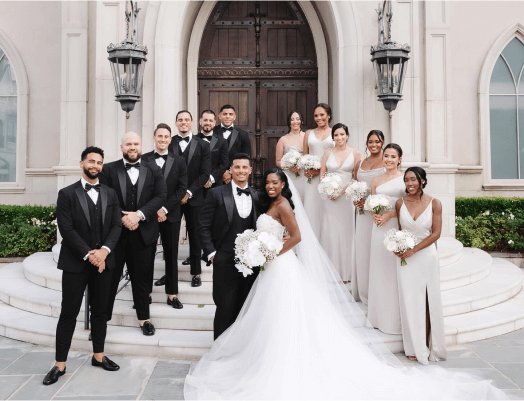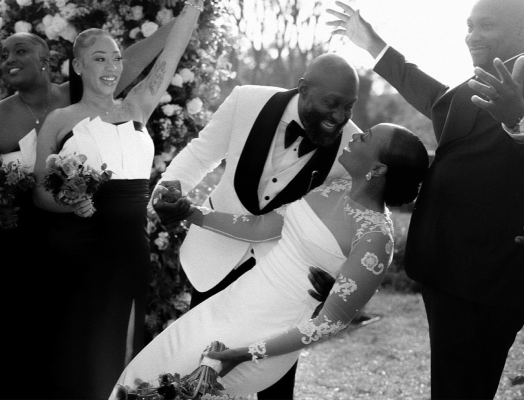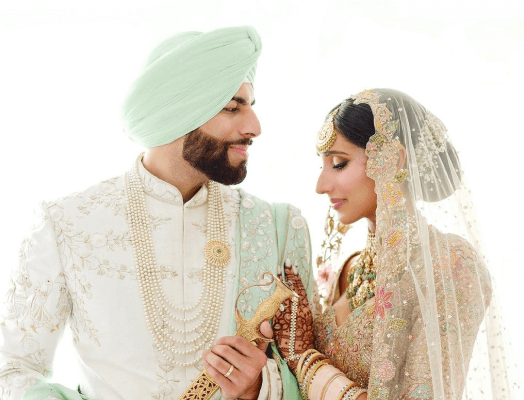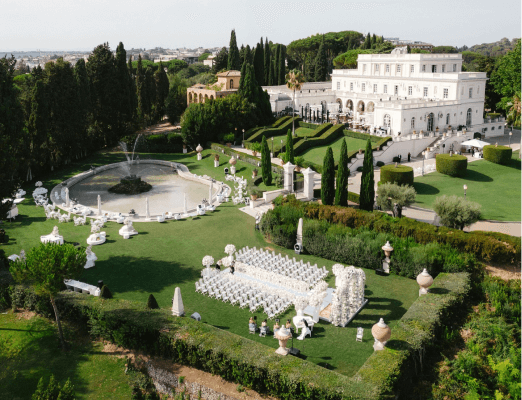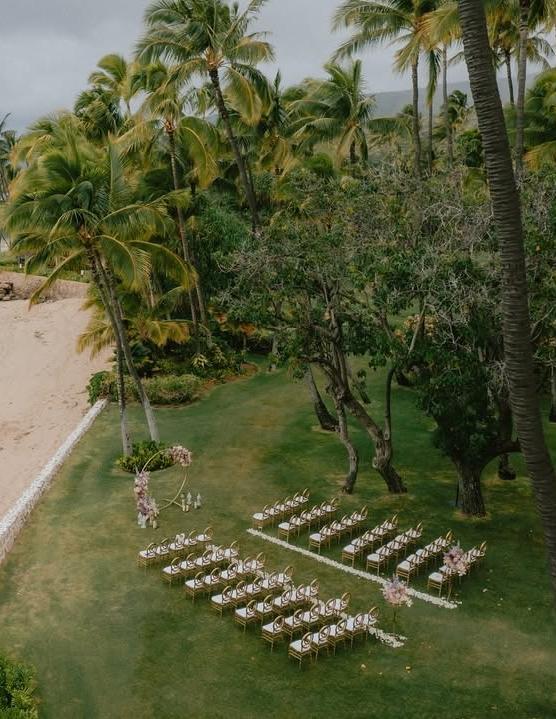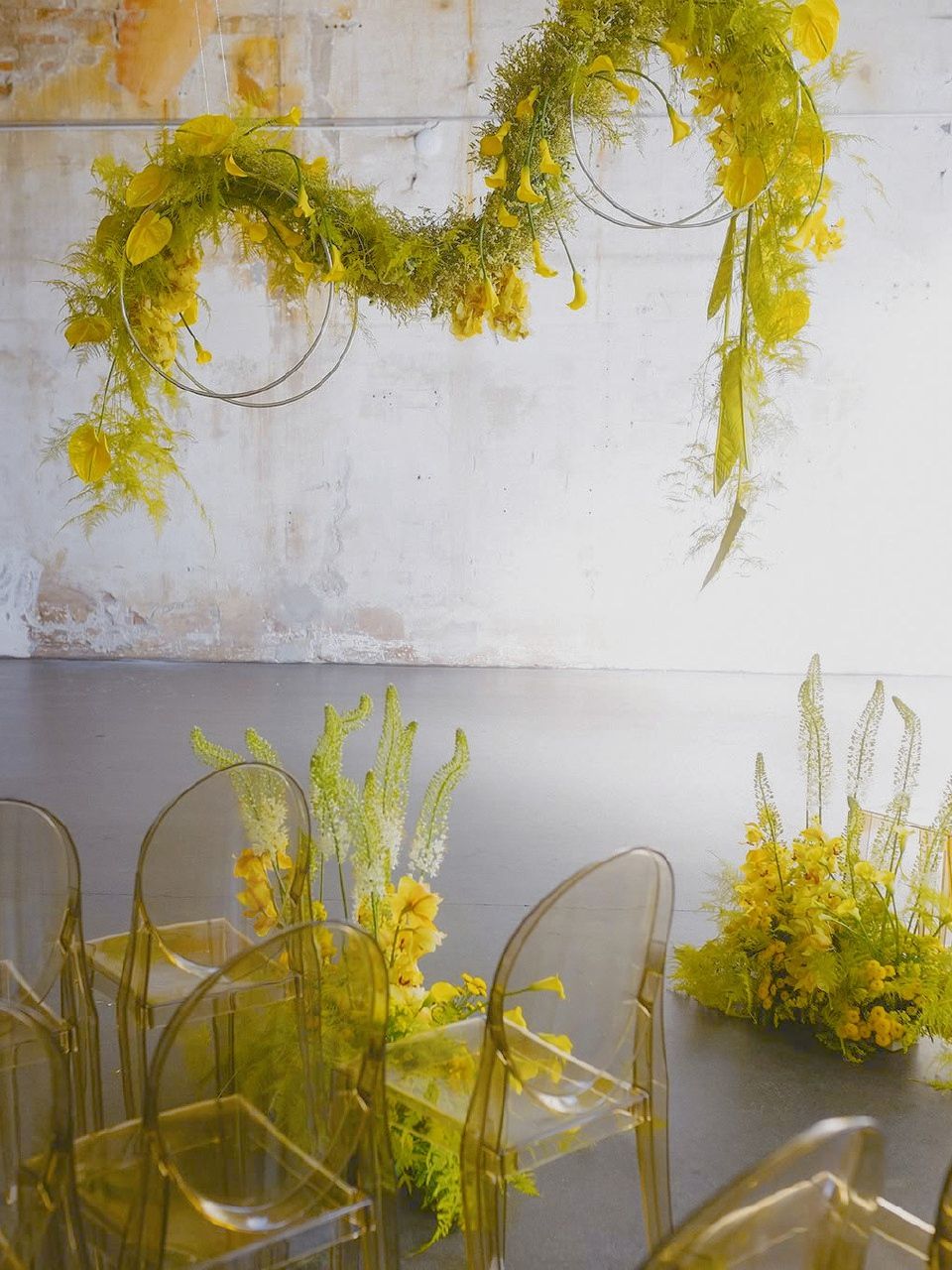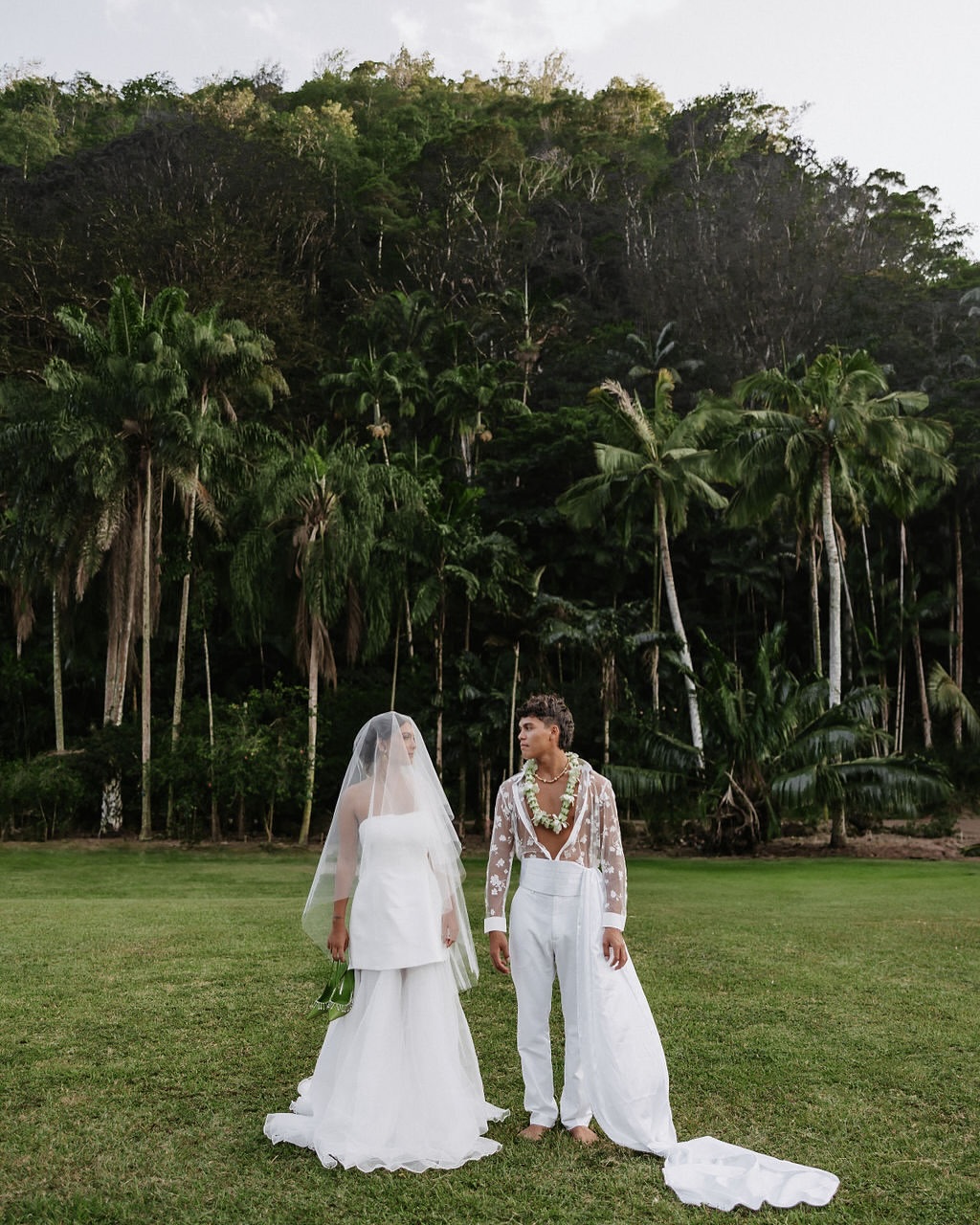Finding Your Match: LGBTQ+ Dating Guide
- Author: Natali Grace Levine
- Reading time: 15 min 31 sec
- Publication date: 05/28/2025
- Updated: 09/30/2025
- Understanding Your Own Dating Landscape
- Navigating the Digital Dating World
- Meeting People in the Real World
- First Date Magic: Making Great Impressions
- Building Meaningful Connections
- LGBTQ+ Dating Advice: Navigating Physical and Emotional Intimacy
- LGBTQ+ Dating Tips on Handling Challenges and Setbacks
- Success Stories: What Healthy LGBTQ+ Relationships Look Like
Love is love – but let's be honest, dating as an LGBTQ+ person comes with its own unique set of adventures, challenges, and absolute magic moments. Whether you're taking your first tentative steps into the dating world or you're a seasoned romantic looking to refresh your approach, this guide is here to walk you through every twist and turn of finding your person (or people!).
Find Your Perfect Wedding Vendors
Understanding Your Own Dating Landscape


Before you swipe right or walk up to that cute person at the coffee shop, take a moment to check in with yourself. Your dating journey is uniquely yours, and understanding where you stand makes all the difference.
Know Your Identity, Own Your Story
Here's the thing – you don't need to have everything figured out to start dating. Your identity might be crystal clear, or it might be beautifully fluid and evolving. Both are completely valid! What matters is being honest with yourself about where you are right now.
Are you out to your family and friends? Are you comfortable with your identity but prefer to keep some aspects private? There's no right or wrong answer here, but knowing your comfort level helps you navigate dating with confidence. You'll know which conversations you're ready for and which boundaries you want to maintain.
Safety First – It's Not Paranoia, It's Smart
Let's address the elephant in the room: dating while LGBTQ+ sometimes requires extra safety considerations. This isn't about living in fear – it's about dating smart so you can focus on the fun stuff.
When you're preparing to meet someone new, your instincts are your best friend. If something feels off about a conversation or a person's behavior, trust that feeling. It's always better to err on the side of caution than to ignore red flags. Make it a habit to meet first dates in public places where you feel comfortable and safe – coffee shops, restaurants, or busy parks are perfect options. These venues give you the freedom to leave easily if things aren't going well, and they provide a natural buffer of other people around you.
Communication with your support system becomes crucial here. Let a trusted friend know where you're going, who you're meeting, and when you expect to be back. Consider setting up a check-in system where you text them at a predetermined time.
Before you meet up, take some time to research LGBTQ+-friendly venues in your area. Having a mental list of safe spaces means you'll always have options for dates, and you'll feel more confident suggesting places where you know you'll be welcomed and respected. Online safety deserves just as much attention as in-person precautions. Be thoughtful about how much personal information you share in those early conversations – your workplace, your exact neighborhood, or your daily routines don't need to be first-date topics. If someone's photos seem too good to be true or inconsistent, a quick reverse image search can save you time and potential heartbreak. Video chatting before meeting in person has become more normalized and gives you a chance to see if your connection translates beyond text messages.

Navigating the Digital Dating World


Online dating has revolutionized how we meet people, and for LGBTQ+ folks, it's opened doors that didn't exist before. But with great apps comes great responsibility – to yourself and your sanity!
Choosing the Right LGBTQ+ Dating App for You
Not all dating apps are created equal, and what works for your friend might not work for you. The landscape of online dating has evolved dramatically, and you now have more options than ever to find spaces where you feel authentic and comfortable.
LGBTQ+-specific platforms like Grindr, HER, Scruff, or Lex offer something invaluable: spaces where you know everyone understands your experience on some level. These apps often feel safer and more understanding because you're not constantly wondering if someone will accept your identity. The conversations tend to move past basic LGBTQ+ 101 questions, allowing you to focus on compatibility and connection. However, depending on where you live, these platforms might have smaller user bases, which can feel limiting if you're in a rural area or smaller city.
Mainstream apps like Tinder, Bumble, Hinge, and OkCupid have made significant strides in becoming more inclusive. Many now offer comprehensive gender and sexuality options that go far beyond the basic binary choices of the past. These platforms typically have much larger user bases, which means more potential matches, but you might find yourself doing more filtering to find people who are genuinely supportive of LGBTQ+ identities. The advantage here is that you might connect with allies and supporters who wouldn't necessarily be on LGBTQ+ dating sites but who could be wonderful partners.
Don't feel like you need to commit to just one platform. Many successful daters use a combination approach – perhaps a mainstream app for broader reach and an LGBTQ+-specific app for community connection. Pay attention to which platforms feel most comfortable for you and where you're having the most meaningful conversations.
Crafting a Profile That's Authentically You
Your dating profile is your first impression, so make it count! But here's the secret: the best profiles aren't perfect – they're real. You want someone to swipe right because they're genuinely interested in getting to know you, not because you've created some impossibly polished version of yourself.
When selecting photos, think about telling the story of who you are rather than just showing what you look like. Your main photo should clearly show your face and capture you at your most confident – whether that's laughing with friends, doing something you love, or simply looking directly at the camera with a genuine smile. Include recent photos taken within the last year, so there are no surprises when you meet in person.


Beyond your main photo, choose images that showcase different aspects of your personality and interests. Maybe there's a photo of you hiking, cooking, at a concert, or volunteering for a cause you care about. Your written bio is where you really get to shine and spark conversations. Instead of listing generic interests like "I love movies and travel," get specific about what excites you. These details give potential matches actual topics to start conversations about. Share what you're looking for, whether that's casual dating, a serious relationship, or something in between – clarity here saves everyone time and helps attract people who want similar things.
The Art of LGBTQ+ Dating Online Conversation
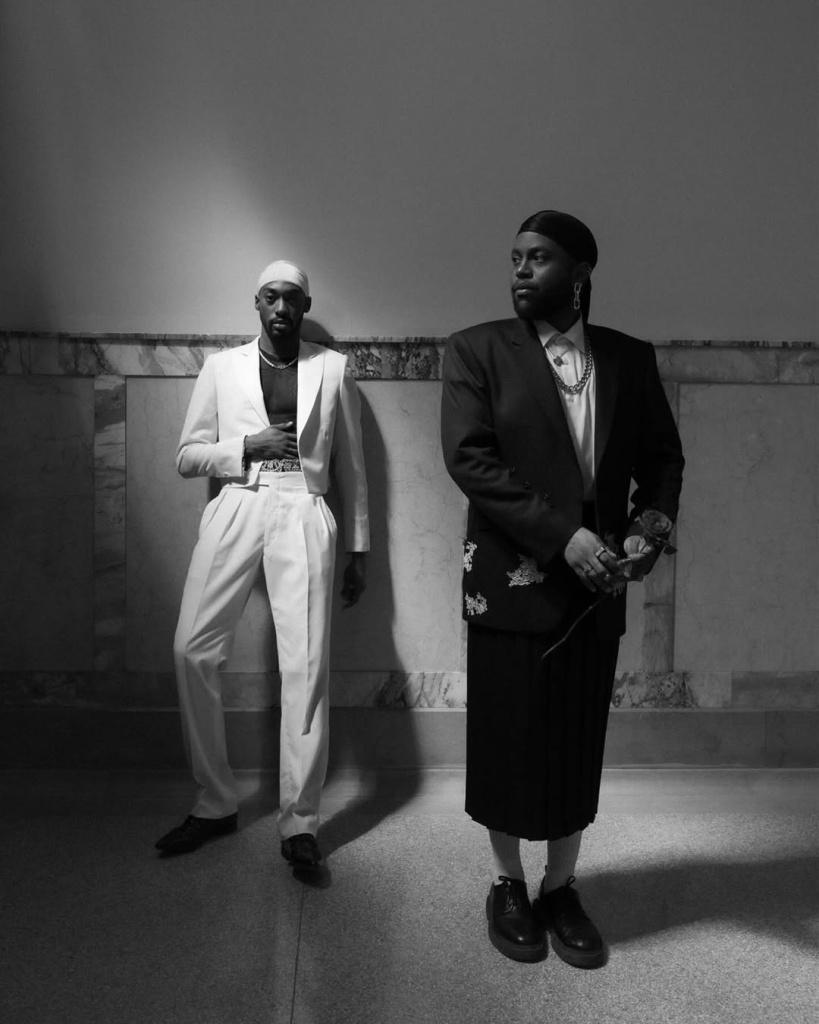
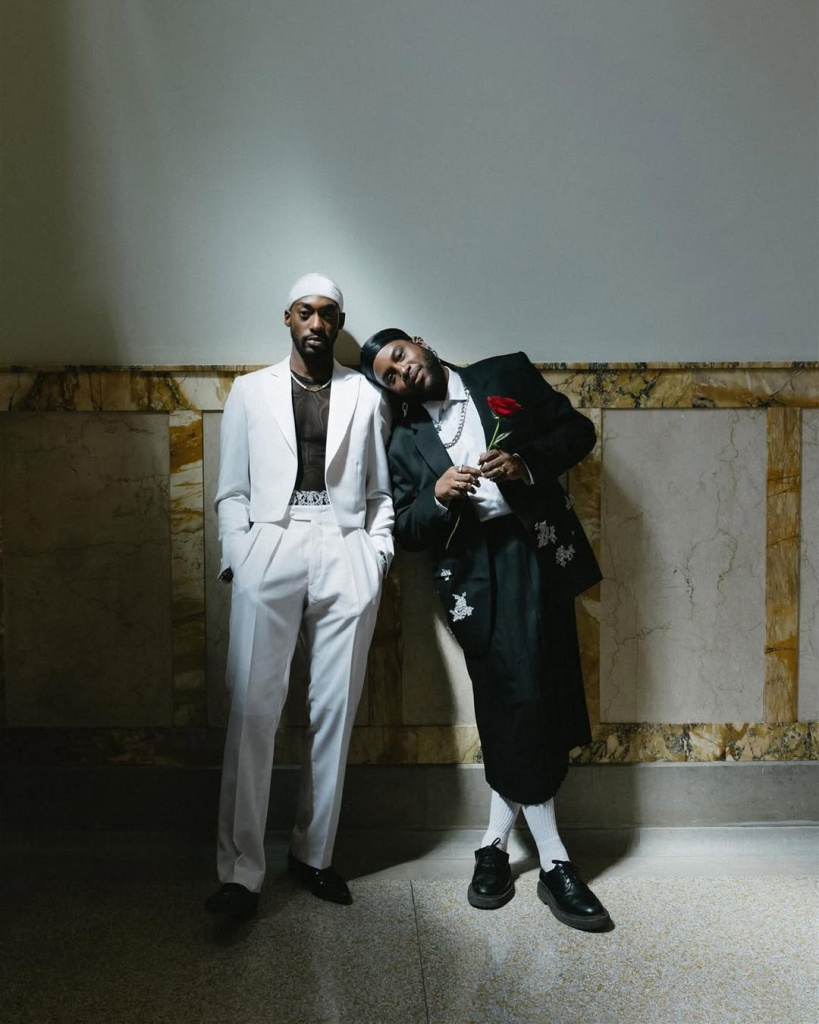
You've matched – now what? Starting conversations online can feel awkward, but it doesn't have to be. The key is moving beyond generic openers and actually engaging with the person you've matched with as an individual.
Skip the "hey" or "how's your day" messages that could be sent to literally anyone. Instead, reference something specific from their profile that caught your attention. Maybe they mentioned loving a particular band, visiting an interesting place, or having an unusual hobby. Starting with "I noticed you're into rock climbing – have you tried the new gym downtown?" immediately shows you've actually read their profile and gives them something concrete to respond to. Open-ended questions work much better than ones that can be answered with a simple yes or no. Instead of "Do you like traveling?" try "What's the most interesting place you've visited recently?" This invites storytelling and gives you much more to work with in your response.
Sharing genuine compliments can be a great conversation starter, but avoid focusing solely on appearance. Comments like "You have such an interesting perspective on environmental issues" or "Your photos from that hiking trip look amazing" show you're paying attention to who they are beyond just their looks. Making playful observations about things you have in common can also break the ice nicely – "I see we both have terrible taste in reality TV shows" with a laughing emoji can start a fun conversation about guilty pleasures.
Once you've got a conversation going, the art is in keeping it flowing naturally. Ask follow-up questions that show you're actually listening to their responses. If they mention they're a teacher, ask what grade they teach or what their favorite part of their job is. Share related stories from your own life to keep the conversation balanced – you want it to feel like a tennis match where both people are contributing equally. Move beyond surface-level small talk by discussing passions, dreams, and experiences that really matter to you both. This is where you start to get a sense of whether you're compatible beyond just mutual attraction.
Knowing when to suggest meeting in person is crucial – too early and you might seem pushy, too late and the conversation can fizzle out. Generally, after a few days of good back-and-forth conversation where you both seem engaged and interested, it's natural to suggest grabbing coffee or meeting up. Pay attention to how they respond to the suggestion of meeting – enthusiasm is a good sign, while deflection or excuses might indicate they're not quite ready or not as interested as you hoped.
Meeting People in the Real World


While apps are convenient, there's something magical about meeting someone organically. The key is putting yourself in situations where you can connect with like-minded people.
LGBTQ+ Dating Events and Friendly Spaces
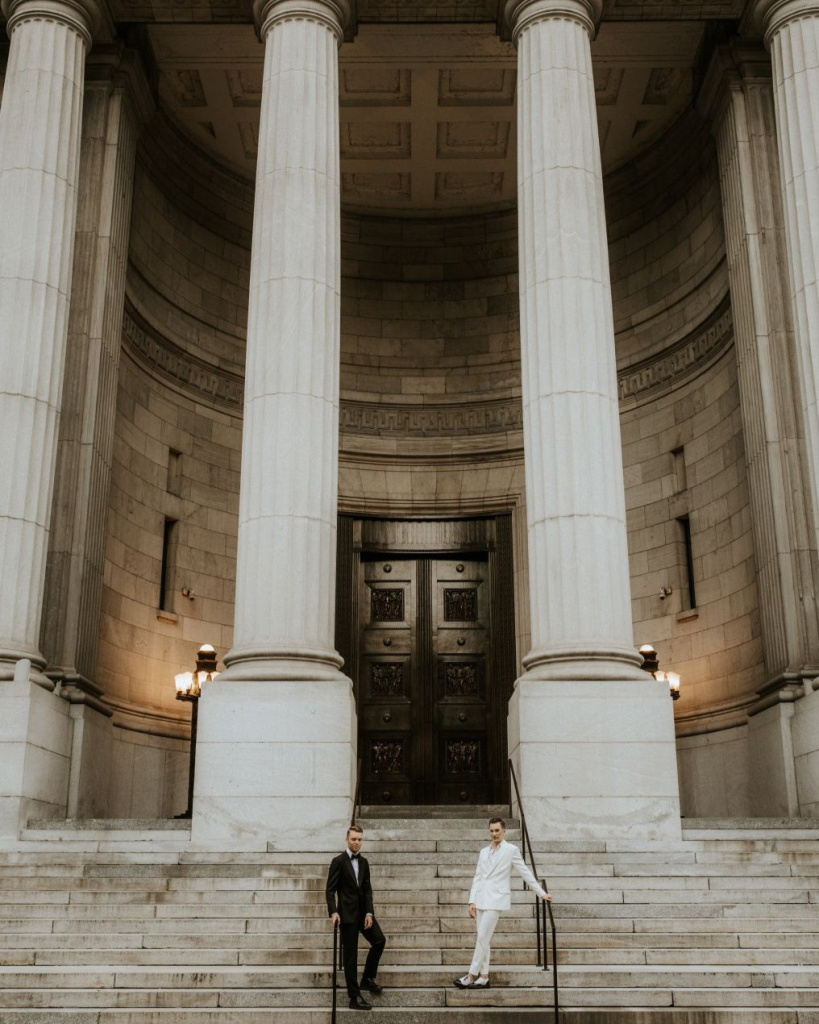
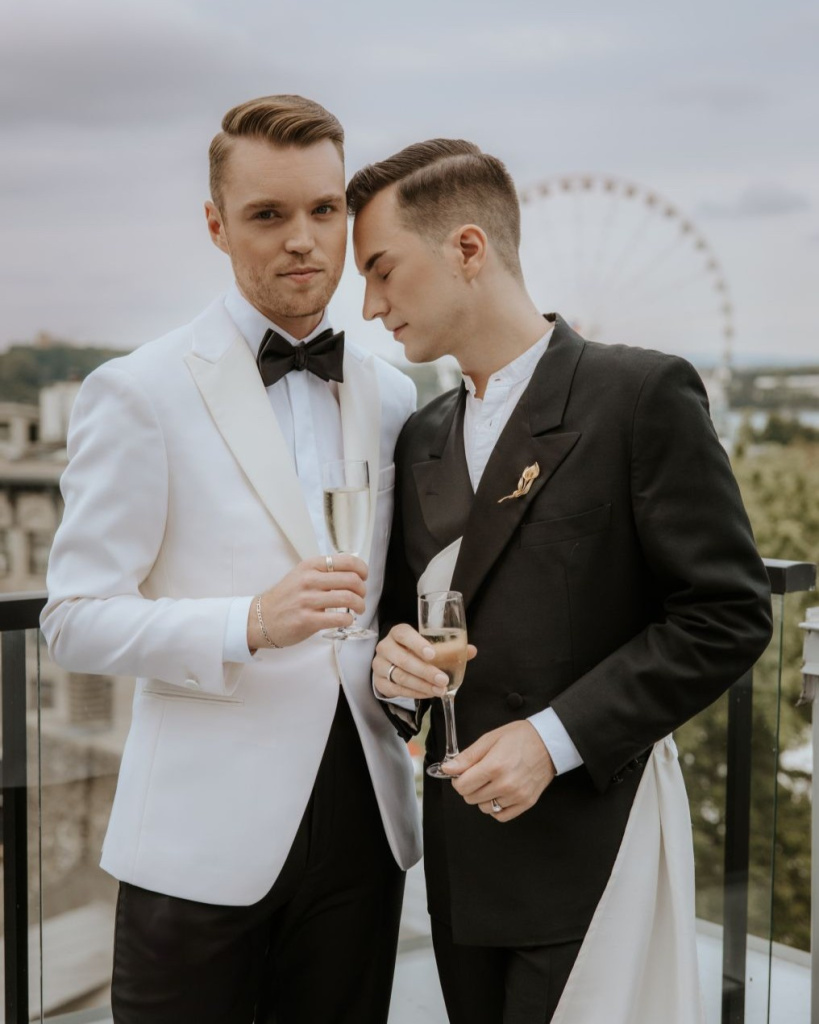
Your local LGBTQ+ dating community is a goldmine for meeting people who share your experiences and values, and the beauty is that these connections often feel more natural and pressure-free than traditional dating scenarios.
Community centers and organizations serve as the heart of many local LGBTQ+ communities. These spaces frequently host social events, support groups, educational workshops, and recreational activities that bring people together around shared interests rather than just dating. You might find yourself in a cooking class, a book discussion, or a volunteer project where conversations flow naturally and you get to see people in their element. The low-pressure environment means you can build friendships that might blossom into something more, or simply expand your social circle to include people who understand your experiences.
Pride events throughout the year offer wonderful opportunities to meet like-minded people in celebratory atmospheres. While the big annual parade gets most of the attention, many communities host smaller pride events, fundraisers, and social gatherings throughout the year. These celebrations attract people who are out, proud, and looking to connect with their community. The shared experience of celebration and advocacy often creates instant bonds and gives you plenty to talk about with new people you meet.
Interest-based LGBTQ+ groups might be the perfect sweet spot for meeting someone special. Look for LGBTQ+ book clubs, hiking groups, professional networking events, sports leagues, hobby meetups, or volunteer organizations. When you're doing something you genuinely enjoy with people who share both your interests and your identity, connections happen organically.
Even LGBTQ+ bars and nightlife, while not everyone's scene, remain important community spaces where social barriers are lower and people are explicitly looking to meet others. These venues offer everything from quiet conversation spaces to dance floors, trivia nights to drag shows, giving you options that match your comfort level and interests.
Expanding Your Social Circle
Sometimes the best way to meet someone is through friends of friends, and the beautiful thing about expanding your social circle is that it enriches your life even when romance isn't in the cards. The more connected you are to your community and the more diverse your friendships, the more opportunities you create for meaningful encounters.
Start by being more intentional about accepting invitations, even when you're not sure you'll enjoy the event. That house party your coworker mentioned, the art gallery opening your friend is dragging you to, or the volunteer opportunity you've been considering – these are all chances to meet new people in natural settings. When you show up with genuine curiosity and openness rather than a desperate need to find a date, you're much more attractive and approachable. People can sense when someone is hunting for a relationship versus simply enjoying the moment and connecting with others.
Don't underestimate the power of being direct with your trusted friends about your dating life. Let them know you're open to meeting new people, and ask if they know anyone they think you'd click with. Friends often see compatibility that we might miss, and they can provide valuable context about potential matches that you'd never get from a dating app. Plus, when a friend introduces you to someone, there's an immediate level of trust and common ground that can make those first conversations much more comfortable.
First Date Magic: Making Great Impressions


You've connected with someone special, and now it's time for that crucial first date. The goal isn't perfection – it's connection and having a good time together.
Choosing the Perfect First Date Activity
The best first dates create opportunities for conversation while doing something enjoyable. Consider these options:
- Coffee or Tea Dates: Classic for a reason. Low pressure, easy to extend if things are going well, and simple to gracefully end if they're not.
- Activity Dates: Mini golf, bowling, art galleries, or local festivals give you something to talk about and can help ease first-date nerves.
- Food Adventures: Try a new restaurant together, visit a farmer's market, or even cook something simple together if you're both comfortable with that level of intimacy.
- Outdoor Options: A walk in a beautiful park, visiting a botanical garden, or attending an outdoor concert can be wonderfully romantic.
Pre-Date Preparations
Plan to arrive on time or even a few minutes early. This shows respect for your date's time and helps you feel more settled and confident when they arrive. If you're running late due to circumstances beyond your control, communicate promptly rather than leaving them wondering.
Personal preparation goes beyond just looking good, though feeling confident in your appearance certainly helps. Choose an outfit that makes you feel like the best version of yourself while still being appropriate for your planned activity.
Consider putting your phone on silent to show your date that they have your full attention. In our constantly connected world, this simple gesture communicates respect and interest. Prepare a few conversation topics or questions in case there are natural lulls in conversation – having these in your back pocket can help you feel more confident and keep the dialogue flowing smoothly.
Conversation Tips for First Dates
Great Topics to Explore:
- Their passions and interests
- Travel experiences and dream destinations
- Favorite books, movies, or shows
- Career goals and what excites them about their work
- Family and friends (as they're comfortable sharing)
- Funny stories and experiences
Topics to Approach Carefully (Save for Later Dates):
- Detailed relationship history
- Deeply personal trauma or struggles
- Financial situations
- Future family planning
- Extremely controversial political views
Reading the Signs: Is There Chemistry?
Pay attention to both verbal and non-verbal cues:
Positive Signs:
- They maintain eye contact and seem engaged
- They ask questions about you and remember details
- Body language is open and relaxed
- They laugh at your jokes (even the bad ones!)
- They suggest extending the date or mention future plans
Red Flags:
- Constantly checking their phone
- Talking only about themselves
- Being rude to service staff
- Making you feel uncomfortable or pressured
- Dismissing your thoughts or experiences
Building Meaningful Connections
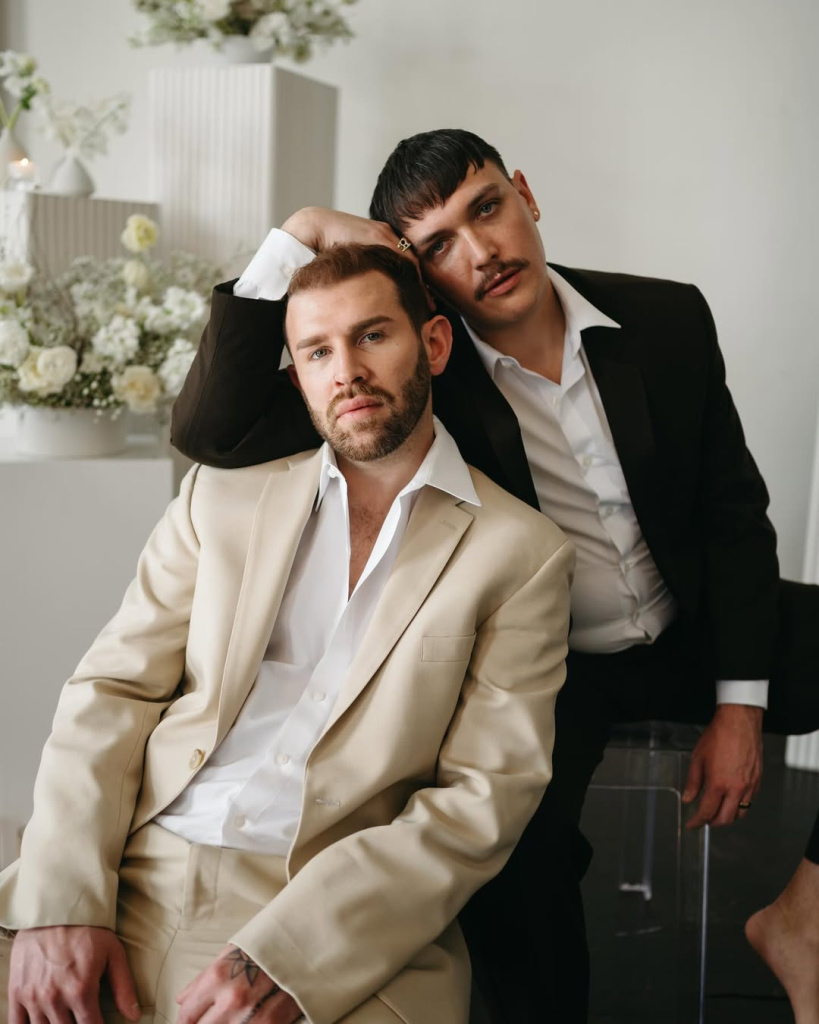
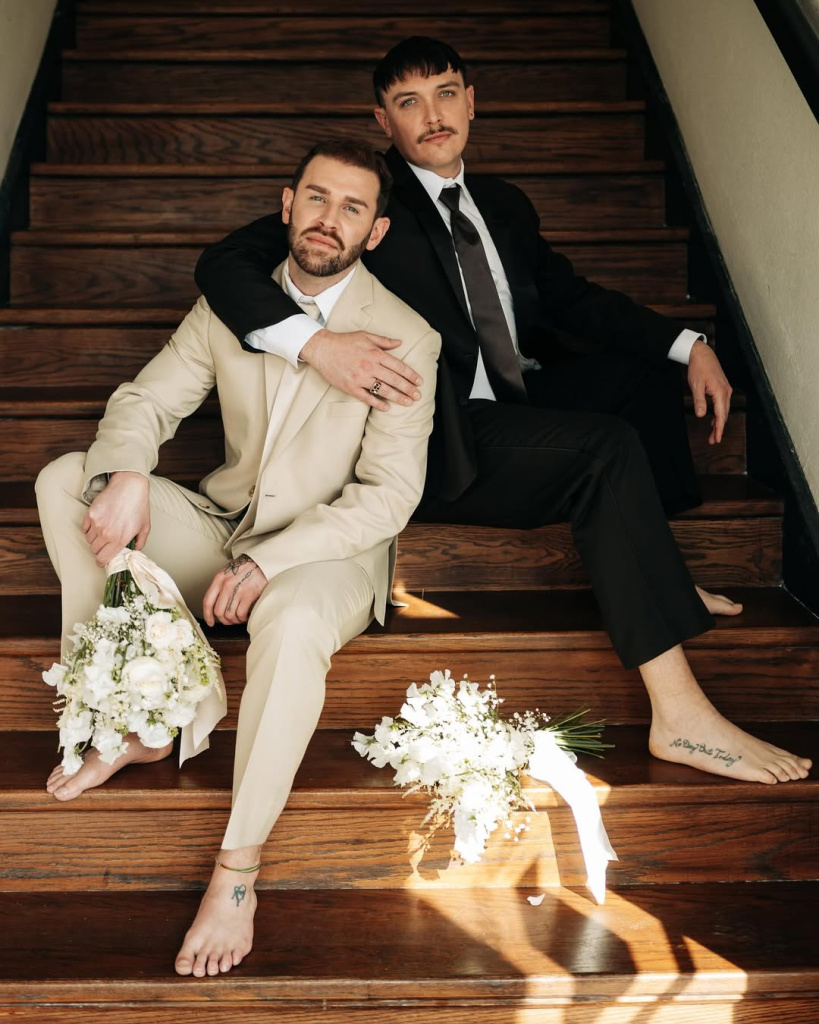
So you've had a great first date – now what? Building a strong foundation for any relationship, whether casual or serious, requires intention and care.
The Art of Follow-Up
After a good first date, don't play games with timing. If you had fun, say so! A simple text like "I had such a great time tonight. Would you like to get dinner this weekend?" is perfect.
Follow-Up Best Practices:
- Reach out within 24-48 hours
- Be specific about your interest in seeing them again
- Suggest concrete plans rather than vague "let's hang out soon"
- Be understanding if they need time to respond
Pacing Your Relationship
Every relationship develops at its own pace, but here are some general guidelines:
Early Dating (First Few Dates):
- Focus on getting to know each other
- Keep some mystery alive
- Maintain your own interests and friendships
- Be consistent in your communication
Developing Connection (A Few Weeks In):
- Start sharing more personal stories and experiences
- Introduce them to your friends (when you're both ready)
- Begin discussing what you're each looking for
- Be more spontaneous with plans and communication
Communication That Builds Trust
Honest, open communication is the foundation of any healthy relationship. This is especially important in LGBTQ+ dating, where you might be navigating coming out processes, family dynamics, or past experiences together.
Essential Conversations to Have:
- What you're both looking for in a relationship
- Boundaries around physical intimacy
- Comfort levels with being out in different situations
- How you prefer to communicate (texting, calling, in person)
- Past relationships and what you've learned from them
LGBTQ+ Dating Advice: Navigating Physical and Emotional Intimacy


Intimacy – both physical and emotional – develops differently for everyone. There's no timeline you need to follow, and what matters most is that you're both comfortable and enthusiastic about each step.
Building Emotional Intimacy
Emotional intimacy often comes before physical intimacy and involves sharing your authentic self with someone else. This process can feel vulnerable, especially when you've had past experiences where your identity wasn't fully accepted or celebrated. Take your time building this foundation – rushing emotional intimacy rarely leads to lasting connections.
Start by sharing your fears, dreams, and vulnerabilities at a pace that feels comfortable for both of you. Maybe you open up about your career aspirations, your relationship with your family, or experiences that have shaped who you are today. Pay attention to how your date responds to these shares – do they listen actively, ask thoughtful follow-up questions, and reciprocate with their own stories? Healthy emotional intimacy is a two-way street where both people feel safe being authentic.
Supporting each other through challenges, even small ones, builds trust and connection. This might mean being a listening ear when they're frustrated with work, celebrating their achievements, or simply being present during difficult moments. Being fully present when you're together might sound simple, but it's increasingly rare in our distracted world. Put away your phone, make eye contact, and give your full attention to your conversations.
Approaching Physical Intimacy
Physical intimacy should always be consensual, enthusiastic, and comfortable for everyone involved. Don't assume anything – communicate openly about what you want and ask about their comfort level.
Important Considerations:
- Discuss sexual health and testing openly
- Talk about protection and safety measures
- Share your preferences and boundaries
- Check in with each other regularly
- Remember that consent can be withdrawn at any time
LGBTQ+ Dating Tips on Handling Challenges and Setbacks


Dating isn't always smooth sailing, and that's okay! Every challenge is an opportunity to learn more about yourself and what you want in a relationship.
When Dating Feels Overwhelming
If you're feeling burned out, take a break. Delete the apps for a week, focus on your friendships and hobbies, and remember that your worth isn't determined by your relationship status. Dating burnout is incredibly common, especially when you're putting a lot of energy into meeting new people without finding meaningful connections.
Recognition is the first step toward addressing dating fatigue. You might notice that every date feels like a chore rather than an exciting opportunity to meet someone new. Taking a break doesn't mean giving up on love – it means prioritizing your mental health and overall well-being so that when you do return to dating, you're coming from a place of strength rather than desperation. Use this time to reconnect with the activities and people that bring you joy. Often, when we stop actively searching for love and instead focus on creating a fulfilling life, we become more attractive to potential partners because we're radiating contentment and self-sufficiency.
Dealing with Rejection
Rejection stings, but it's not a reflection of your worth as a person. Sometimes people aren't compatible, and that's actually a good thing – it saves you both time and emotional energy that can be better spent finding someone who truly appreciates what you bring to the table.
When someone chooses not to pursue a relationship with you, it's natural to feel disappointed and even hurt. Allow yourself to feel these emotions briefly rather than trying to suppress them or immediately jump back into dating. Remember that compatibility is a two-way street, and rejection often says more about compatibility than it does about your worth as a person.
Lean on your support system during these moments. Your friends and chosen family are there to remind you of your worth when rejection makes you temporarily forget it. They can offer perspective, share their own dating stories, or simply distract you with fun activities until the sting fades. Keep perspective by remembering that finding the right person often means going through several wrong ones first – the right person will appreciate exactly what you bring to the table.
Managing Family and Social Dynamics
Dating while LGBTQ+ sometimes means navigating complex family situations or social dynamics that straight, cisgender people don't face.
If You're Not Out to Family:
- Be upfront with potential partners about your situation
- Don't rush coming out just because you're dating someone
- Consider couples counseling if this becomes a significant issue
- Remember that your timeline for coming out is yours alone
Dealing with Unsupportive People:
- Set clear boundaries about what behavior you will and won't tolerate
- Surround yourself with chosen family and supportive friends
- Don't let others' opinions dictate your happiness
- Consider limiting contact with people who consistently make you feel bad about yourself

Success Stories: What Healthy LGBTQ+ Relationships Look Like


Healthy LGBTQ+ relationships share many characteristics with any healthy relationship, but they also have some unique elements:
- Mutual Respect and Understanding: Partners in healthy LGBTQ+ relationships understand each other's experiences and identities. They don't try to change each other but instead celebrate what makes their partner unique.
- Shared Values and Goals: While you don't need to agree on everything, sharing core values about family, community involvement, career priorities, and life goals creates a strong foundation.
- Individual Growth Within the Relationship: The best relationships help both people grow into better versions of themselves. You should feel supported in pursuing your dreams and becoming who you want to be.
- Community Integration: Healthy LGBTQ+ couples often build connections within the broader community, whether through activism, social groups, or simply having LGBTQ+ friends and chosen family.
Dating as an LGBTQ+ person is a journey of self-discovery, connection, and yes, sometimes heartbreak. But it's also filled with incredible moments of joy, acceptance, and finding people who truly see and celebrate who you are.
Remember that your timeline is your own. Whether you find love on your first date or your hundredth, whether you're looking for marriage or something more casual, whether you're just coming out or you've been proudly out for decades – your story is valid and beautiful.
The most important relationship you'll ever have is with yourself. When you love and accept yourself fully, you attract people who will love and accept you the same way. Be patient with yourself, be open to connection, and trust that your person or people are out there looking for someone exactly like you.
Your love story is waiting to be written. The only question is: are you ready to start the next chapter?







